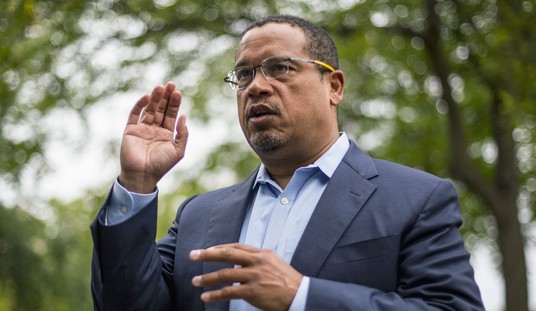The Supreme Court has agreed to take on a thorny, if somewhat constitutionally wonky case which could have a huge impact on state legislatures across the nation after the 2020 census. They will be tasked with coming up with a ruling and a definition of the phrase, “one person, one vote.” As the New York Times is reporting, the question deals with some intangibles which will be difficult to define.
The Supreme Court on Tuesday agreed to hear a case that will answer a long-contested question about a bedrock principle of the American political system: the meaning of “one person one vote.”
The court has never resolved whether that means that voting districts should have the same number of people, or the same number of eligible voters. The difference matters in places with large numbers of people who cannot vote legally, including immigrants who are here legally but are not citizens; unauthorized immigrants; children; and prisoners.
The new case, Evenwel v. Abbott, No. 14-940, is a challenge to voting districts for the Texas Senate brought by two voters, Sue Evenwel and Edward Pfenninger. They are represented by the Project on Fair Representation, the small conservative advocacy group that has mounted earlier challenges to affirmative action and to a central part of the Voting Rights Act.
It’s not surprising that the case came out of Texas because they have one of the larger populations of legal residents (well, some of them at least) who are ineligible to vote because they are not citizens. And that’s what this case comes down to. While not consistent in every state, most congressional districts are chopped up in a way which puts roughly the same number of people in each one. (That number is currently somewhere around 700K.) If you live in a district where virtually every adult is eligible to vote, then you essentially have one vote per person. But if you live in a district with a huge population of unqualified voters, then fewer people wind up deciding things, giving each of their votes a proportionally greater amount of influence.
Doug Mataconis makes no predictions, but sees big changes on the horizon if the justices agree with the plaintiffs.
[W]hatever the Court decides here is likely to have widespread implications not just inside Texas, but well beyond there. Ultimately, it is likely to spark a whole new round of litigation over Congressional redistricting after the 2020 Census, which may be one reason why the Court would be likely to establish a clear rule in its decision rather than a standard that would just be open to further litigation. Legislators will need to begin drawing new district boundaries as soon as the Census results are available, and Judges who will be asked to review those districts in the inevitable lawsuits are going to need a clear guideline. Otherwise, the Court will just be dealing with this all over again.
I’m not sure that the court is going to take the requested action here, but not because the case is without merit. Sometimes, whether we like it or not, the court is faced with questions which seem to deserve a resolution but there is no effective remedy possible. It’s rare, but that may be what they’ll be dealing with here. Demanding that the states divide up their districts based on eligible voters looks like a task which makes cleaning King Augeas’ stables seem simple by comparison. The first reason is that the census is not accurate. It’s a close approximation at best. Counting the homeless, the frequently moving renters and those “living in the shadows” or off the grid is a massive challenge. And even if you had an accurate count of the total number of heads, how many of them are in prison, on parole or otherwise ineligible for reasons of having committed a felony? How many are illegal immigrants? For that matter, how many will die before the next census? And none of this addresses the question of low population states like Wyoming. They have a single district with less than 600K people, so all of their votes are worth more than the rest of ours by definition.
On the other side of the coin, among those who are currently ineligible, how many will finish their prison terms and regain the right to vote? How many will complete the naturalization process? The list goes on and it’s a dizzying problem to even contemplate. I suppose the court could say something vague along the lines of demanding that the state make their “best effort” to determine the numbers, but then you’re just in line for an endless series of lawsuits from plaintiffs who claim that the best effort in question wasn’t good enough or was corrupted by biased politicians.
I just don’t see how such a ruling is enforceable. But a best guess estimate of the total population is at least manageable and provides a consistent rule. The court may have bitten off more than they can chew on this one.









Join the conversation as a VIP Member